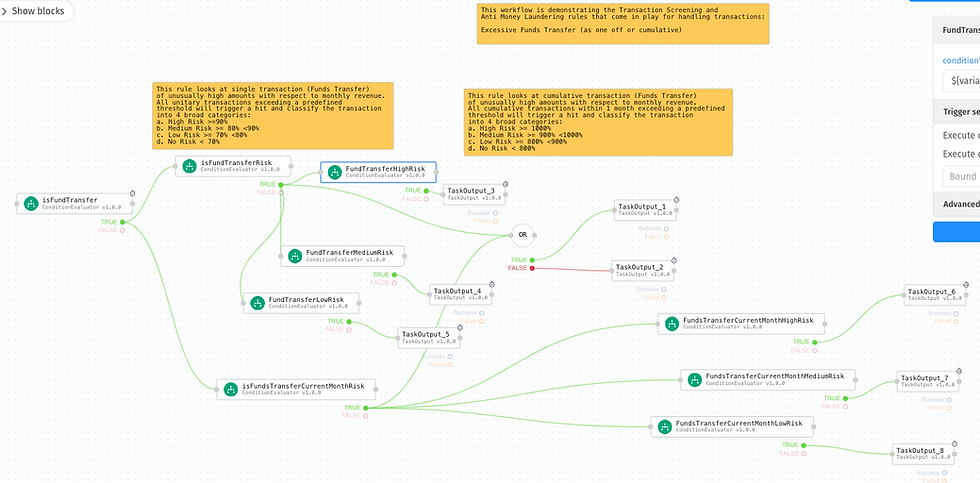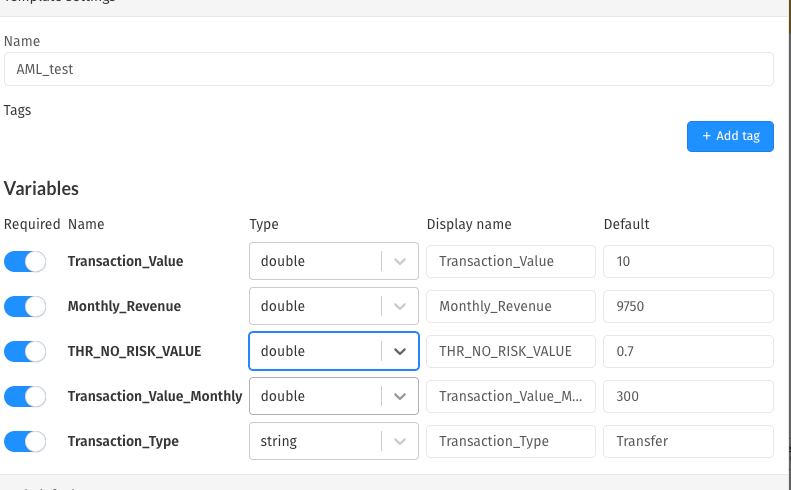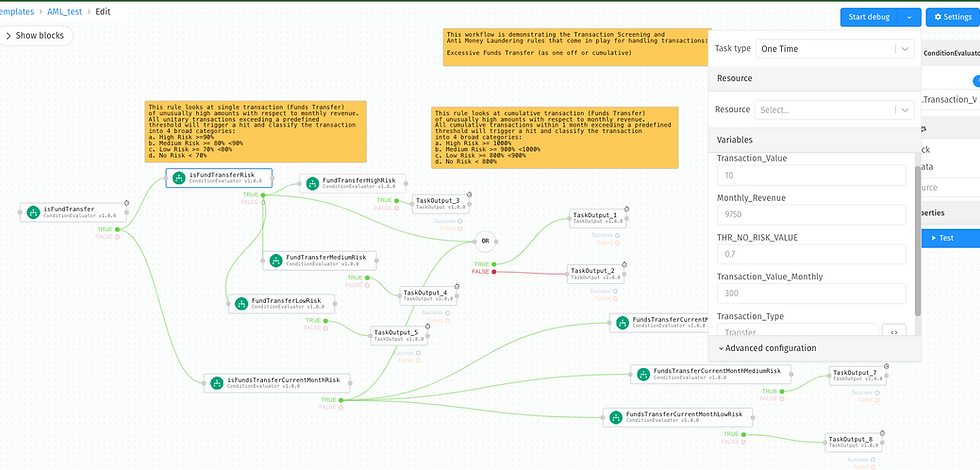Let's start with a template used in one of the previous examples.
This time, we will focus on one particular threshold, just for simplification, that checks if the fund transfer is below a given threshold or not:
We want to change the hard coded value from 0.7 with a variable that can be changed at the runtime, while still keeping the default value as it is:
here is what we will do:
${variables.Transaction_Value} >= ${variables.Monthly_Revenue} * ${variables.THR_NO_RISK_VALUE}As soon as I have added a new variable, my setting for this template was added, so I only had to change a type of the variable to double and add the default value 0.7
From then ownards, template will still work as before, but now if we run a bulk run test, I can change this value at runtime to any other value.
More about this feature you can find here
We can as well test this using our console, first as a subrule by running it in the debug mode:
or we can try the same from the parent template, that it is using this subflow as a policy rule, by hitting the button Test on the node AML_FundTransfer
here is the answer after hitting the test button and leaving variables empty (it uses defaults from the subflow for other values)
Now let's change this value to a very small value
and hit the test button again:
Now we see that the value was taken into account and that the policy rule evaulated it to the RISK for that transaction. Obviosuly we could have changed any other value and repeat the same process.







